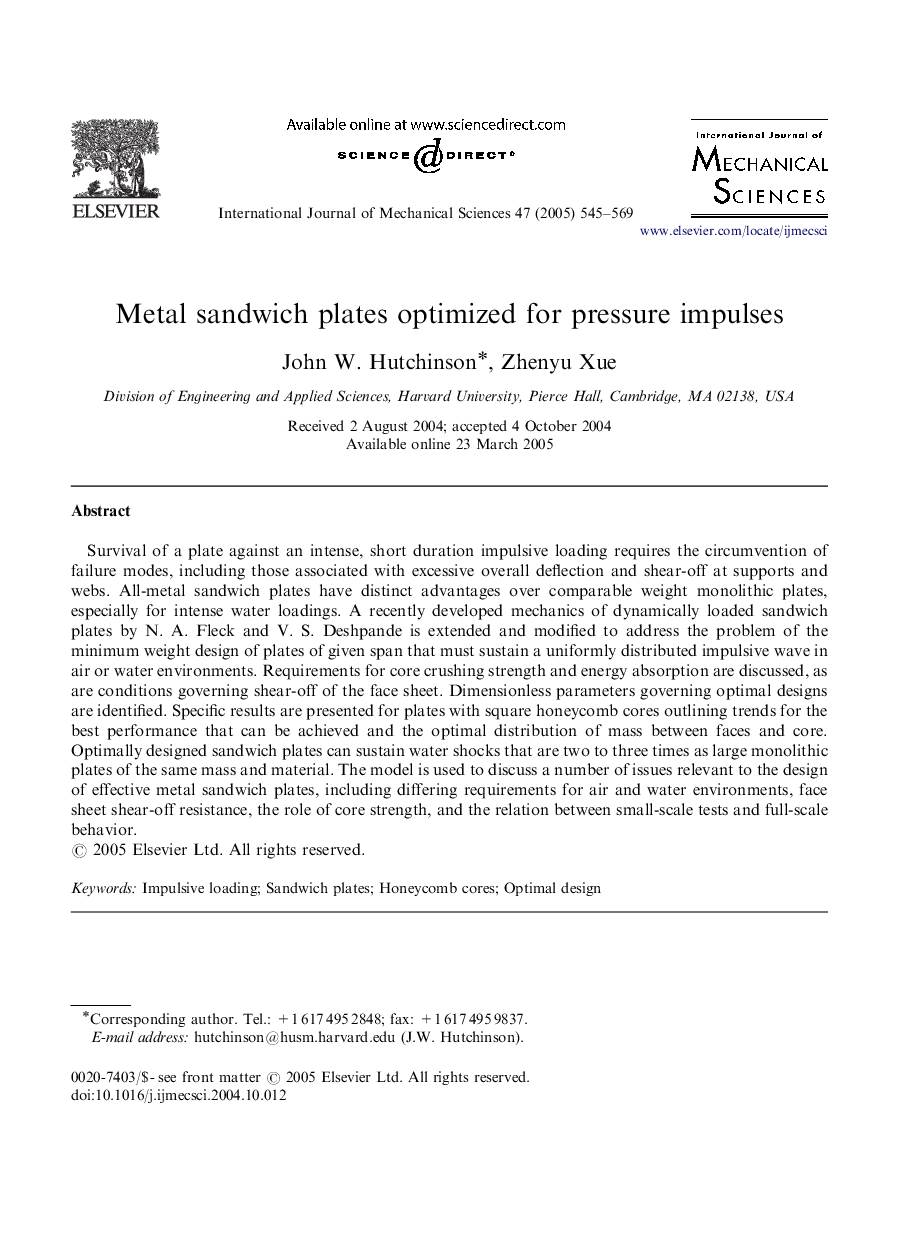| Article ID | Journal | Published Year | Pages | File Type |
|---|---|---|---|---|
| 9706109 | International Journal of Mechanical Sciences | 2005 | 25 Pages |
Abstract
Survival of a plate against an intense, short duration impulsive loading requires the circumvention of failure modes, including those associated with excessive overall deflection and shear-off at supports and webs. All-metal sandwich plates have distinct advantages over comparable weight monolithic plates, especially for intense water loadings. A recently developed mechanics of dynamically loaded sandwich plates by N. A. Fleck and V. S. Deshpande is extended and modified to address the problem of the minimum weight design of plates of given span that must sustain a uniformly distributed impulsive wave in air or water environments. Requirements for core crushing strength and energy absorption are discussed, as are conditions governing shear-off of the face sheet. Dimensionless parameters governing optimal designs are identified. Specific results are presented for plates with square honeycomb cores outlining trends for the best performance that can be achieved and the optimal distribution of mass between faces and core. Optimally designed sandwich plates can sustain water shocks that are two to three times as large monolithic plates of the same mass and material. The model is used to discuss a number of issues relevant to the design of effective metal sandwich plates, including differing requirements for air and water environments, face sheet shear-off resistance, the role of core strength, and the relation between small-scale tests and full-scale behavior.
Related Topics
Physical Sciences and Engineering
Engineering
Mechanical Engineering
Authors
John W. Hutchinson, Zhenyu Xue,
